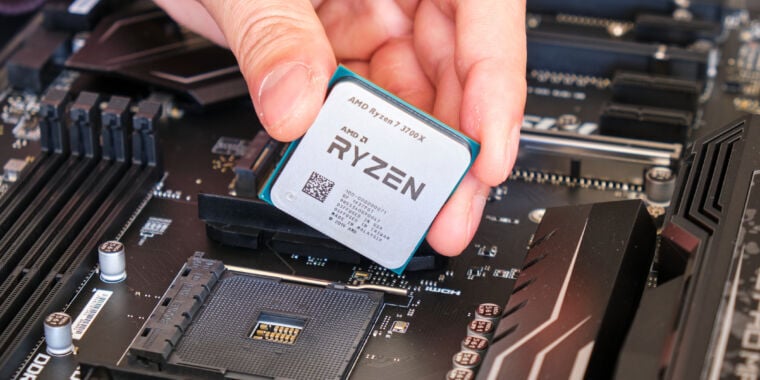- cross-posted to:
- technology@lemmy.ml
- cross-posted to:
- technology@lemmy.ml
As pointed out elsewhere, the attack requires kernel-level access, and anyone with that access can do a lot of damage anyway.
And the flaw can be fixed (there’s a fix out), it’s just that there’s no remediation once the flaw has been exploited.
It also means no AMD server could be resold because there is no way to know if it was previously infected
anyone with that access can do a lot of damage anyway.
it’s just that there’s no remediation once the flaw has been exploited.
One of these things is not like the other.
Yeah, turning an exploit into one that survives a fresh install is a big deal.
It’s always been a thing that the only way to completely be safe after malware is yeeting the old system and getting a new one…
And even then there have been actively exploited issues where the system gets re-infected when reloading the data from a backup. (My memory is a bit rusty on that one, but it was just data being restored, nothing that should install anything)
There has been a small element of risk, but it’s low enough that this meaningfully increases it.
They’re intrinsically linked, in fact. If you have kernel access, you can do any number of things, including but not limited to persistent rootkits. I agree that this bug is one step further, since it affects the processor itself, but if somebody has ring 0 access that shouldn’t, you already have problems.
Read it again, in context. What they said is perfectly valid.
No, it is misleading. An exploit with no remediation is not remotely comparable to a normal root exploit, which can be fixed with a simple OS reinstall.
Edit: And their follow-up comment, “if somebody has ring 0 access that shouldn’t, you already have problems,” is dangerously misleading. While technically true that you would have a problem in both scenarios, presenting it that way is like telling someone not to worry about losing a leg because their sprained ankle is already a problem.
For users seeking to protect themselves, Nissim and Okupski say that for Windows machines—likely the vast majority of affected systems—they expect patches for Sinkclose to be integrated into updates shared by computer makers with Microsoft, who will roll them into future operating system updates. Patches for servers, embedded systems, and Linux machines may be more piecemeal and manual; for Linux machines, it will depend in part on the distribution of Linux a computer has installed.
The headline is misleading: the bug is just as fixable as any, and firmware updates are expected to fix it. AMD do not have a “near-unfixable” processor vulnerability.
What’s “near-unfixable” is a deeply embedded bootkit dropped through the successful exploitation of this bug, since it can make itself invisible to the OS and anti malware tools, and could survive a reinstallation of the OS.
I wish CPUs would all have a fuse bit to permanently disable those “security co-processors”. They are running who knows what and don’t do the average user any good.
at this point all major chipmakers have proven that innovation is dead, nobody cares about “boring” fratures. We can finally take a step back and reflect on why did we end up here
What are you talking about?
AMD brought high core counts mainstream with infinity fabric connecting multiple chiplets 7 years ago, and their x3D is basically still brand new. Those are both massive innovations.
Jus talking bout fratures
Capitalism
He says, from his iPhone.




